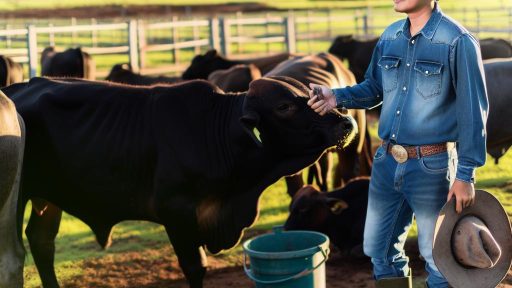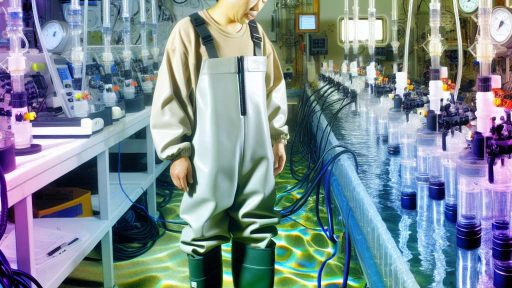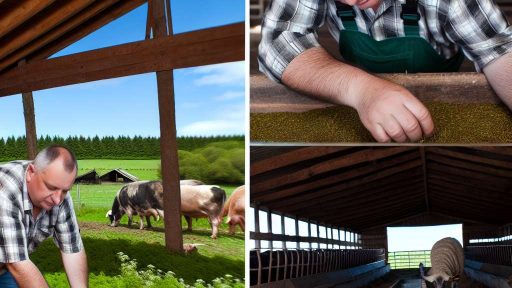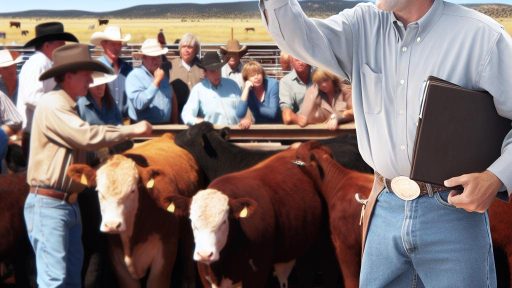Introduction to Pest Control in Livestock Housing
Pest control is essential in livestock housing for multiple reasons.
It protects the health of livestock and prevents economic losses.
Effective pest management reduces the transmission of diseases.
Furthermore, it promotes a clean and safe environment for animals.
Understanding Common Pests
Livestock housing often attracts various pests, including rodents, insects, and parasites.
Rodents can damage feed and spread diseases to animals.
Insects such as flies and mites pose health risks and can cause discomfort.
Parasites like ticks and worms can severely affect livestock productivity.
Implementing Integrated Pest Management
Integrated Pest Management (IPM) offers a holistic approach to pest control.
This strategy includes monitoring pest populations and identifying the problem.
IPM utilizes a combination of cultural, biological, and chemical control methods.
By doing this, farmers can minimize reliance on pesticides.
Monitoring Pest Activity
Regular monitoring of pest populations aids in timely interventions.
Farmers should perform routine inspections of livestock housing.
They should also keep records of pest activity and damage observed.
Transform Your Agribusiness
Unlock your farm's potential with expert advice tailored to your needs. Get actionable steps that drive real results.
Get StartedCultural Control Methods
Cultural control methods help create an unfavorable environment for pests.
Proper sanitation practices are vital to remove pest habitats.
For instance, cleaning feed spills and managing waste effectively can deter pests.
Biological Control Strategies
Biological control involves using natural predators or parasites.
For example, introducing beneficial nematodes can help control insect larvae.
Farmers can collaborate with agricultural extension services for guidance.
Chemical Control Options
If pest populations exceed economic thresholds, chemical controls may be necessary.
Selecting appropriate pesticides is crucial for effective pest management.
Always follow label instructions to ensure safe application.
Pest Control Tactics in Livestock Housing
Pest control in livestock housing requires a multifaceted approach.
Utilizing a combination of methods enhances overall effectiveness.
By actively managing pests, farmers can ensure healthier livestock and higher productivity.
Understanding Common Pests in Livestock Environments
Identifying Common Pests
Livestock environments commonly attract a variety of pests.
Insects, rodents, and parasites can disrupt cattle, pigs, and poultry health.
Some of the most prevalent pests include flies, mites, and ticks.
Recognizing these pests early helps in implementing effective control strategies.
The Impact of Pests on Livestock Health
Pests can cause significant economic losses in livestock production.
They transmit diseases that can severely affect animal health.
Additionally, pests may lead to decreased productivity and weight gain.
Moreover, infested livestock can develop skin irritations and infections.
Environmental Factors Contributing to Pest Infestations
Certain environmental conditions promote pest infestations in livestock housing.
For example, warm and humid climates often favor insect reproduction.
Moreover, inadequate sanitation and waste management can attract pests.
Consequently, it is essential to maintain clean and dry living conditions.
Showcase Your Farming Business
Publish your professional farming services profile on our blog for a one-time fee of $200 and reach a dedicated audience of farmers and agribusiness owners.
Publish Your ProfileCommon Types of Pests Found
- Flies – These pests are not just annoying; they can transmit diseases.
- Rodents – Rodents can cause damage to buildings and feed supplies.
- Mites – These tiny pests can infest the skin of livestock, leading to serious health issues.
- Ticks – Ticks latch onto animals and can transmit various diseases.
Recognizing Signs of Infestation
Being proactive in monitoring for signs of infestation is vital.
Common signs include increased animal stress and visible skin lesions.
Also, you may notice changes in animal behavior or feeding patterns.
Regular inspections of livestock housing can help identify these issues early.
Biological Pest Control Methods for Livestock
Introduction to Biological Control
Biological pest control utilizes natural enemies to manage pest populations.
This method reduces reliance on chemical pesticides.
It promotes a healthier environment for livestock.
Common Biological Control Agents
Several organisms serve as effective biological control agents.
- Predatory insects target pest species directly.
- Parasitic wasps lay eggs in or on pests.
- Nematodes can attack and kill soil-dwelling pests.
Implementing Biological Control in Livestock Housing
Successful implementation requires careful planning and monitoring.
First, identify the specific pests affecting the livestock.
Next, choose appropriate biological control agents.
Then, release the agents in targeted areas within the housing.
Benefits of Biological Pest Control
Biological pest control offers numerous advantages for livestock housing.
- It minimizes the risks associated with chemical residues.
- Biological agents enhance biodiversity on the farm.
- They can result in long-term pest population suppression.
Challenges and Considerations
Despite its benefits, biological control poses some challenges.
Agent specificity is crucial; they must target only pests.
Additionally, environmental conditions can affect their effectiveness.
Constant monitoring will help ensure successful pest control.
See Related Content: Health Management in Exotic Farming
Cultural Practices to Minimize Pest Infestation
Implementing Good Hygiene
Maintaining cleanliness in livestock housing is vital.
This includes regular cleaning of feed and waste materials.
Keep the environment dry to discourage pests.
Remove any leftover feed promptly.
In addition, sanitize equipment and surfaces regularly.
A clean environment significantly reduces pest attraction.
Providing Adequate Space
Overcrowding livestock can lead to increased stress.
Stressful conditions often attract pests more readily.
Ensure there is adequate space per animal type.
More space allows for better air circulation and comfort.
This approach helps fewer pests thrive in the environment.
Utilizing Pest-Resistant Materials
Choose construction materials wisely when building housing.
Use pest-resistant materials to deter infestations.
Consider using steel or treated wood for structures.
Regularly check for any signs of wear or damage.
Employing Natural Predators
Encouraging natural predators can help control pests.
Birds and beneficial insects will help reduce pest populations.
Provide habitats that attract these natural predators.
For example, install birdhouses around livestock areas.
Rotation of Livestock
Rotate livestock between different grazing areas.
This practice interrupts pest life cycles significantly.
By moving animals, you reduce pest buildup in one location.
Showcase Your Farming Business
Publish your professional farming services profile on our blog for a one-time fee of $200 and reach a dedicated audience of farmers and agribusiness owners.
Publish Your ProfileMoreover, it fosters healthier pastures over time.
Integrating Feed Management Practices
Implement proper feeding techniques to minimize waste.
Store feed in sealed containers to prevent pest access.
Review feeding schedules to avoid excess food accumulation.
Regularly check feed for signs of contamination.
Find Out More: Sustainable Livestock Waste Solutions For Farms
Chemical Control: Pesticides and Their Application in Livestock Housing
Understanding Pesticides
Pesticides are substances used to kill pests that harm livestock.
These chemicals come in various forms, including sprays and granules.
Farmers choose pesticides based on the specific pests they aim to control.
Types of Pesticides
Generally, there are three main categories of pesticides.
- Insecticides target insect pests.
- Herbicides eliminate unwanted plants.
- Fungicides control fungal infections.
Understanding each type helps farmers select the most effective option.
Application Techniques
Proper application of pesticides is crucial for effectiveness.
Farmers should follow the manufacturer’s instructions carefully.
Common methods include spraying, drenching, and baiting.
For optimal results, timing of application also matters.
Safety Measures
Safety is paramount when using pesticides in livestock housing.
Farmers must wear protective gear during application.
Additionally, proper storage of pesticides reduces risks of accidental exposure.
Moreover, they should monitor livestock closely after treatment.
Environmental Considerations
Using pesticides necessitates consideration of environmental impacts.
Farmers must avoid runoff that can contaminate water sources.
Implementing buffer zones can help protect surrounding ecosystems.
Lastly, they should seek eco-friendly options wherever possible.
Integrated Pest Management
Integrated Pest Management (IPM) combines chemical and non-chemical strategies.
This method helps maintain pest populations at manageable levels.
Farmers use monitoring techniques to assess pest presence effectively.
When necessary, they apply pesticides as part of a broader strategy.
Discover More: Biosecurity Measures For Livestock Housing

Integrated Pest Management Approaches for Livestock
Overview of Integrated Pest Management
Integrated Pest Management (IPM) combines various strategies to manage pests effectively.
This approach emphasizes prevention over eradication.
It allows livestock producers to reduce pest populations sustainably.
Key Components of IPM
IPM involves regular monitoring of pests and their populations.
Producers can identify pest species accurately through this process.
Furthermore, it assesses the potential damage these pests may cause.
Next, it incorporates multiple management strategies.
These strategies include cultural, biological, and mechanical methods.
Cultural Control Strategies
Implementing good sanitation practices is crucial in IPM.
Regularly cleaning livestock housing limits pest habitats.
Proper waste management also reduces food sources for pests.
Crop rotation and pasture management can help disrupt pest life cycles.
Showcase Your Farming Business
Publish your professional farming services profile on our blog for a one-time fee of $200 and reach a dedicated audience of farmers and agribusiness owners.
Publish Your ProfileBiological Control Methods
Utilizing natural predators can manage pest populations effectively.
For example, encouraging birds can reduce insect pests.
Additionally, beneficial insects can control harmful species.
These methods promote a balanced ecosystem within the livestock housing.
Mechanical Control Techniques
Mechanical methods involve physical barriers to pest entry.
Using screens can prevent insects from entering buildings.
Traps can be effective for monitoring and reducing pest numbers.
Moreover, regular maintenance of facilities ensures these barriers work effectively.
Monitoring and Evaluation
Regular monitoring helps in adjusting pest management strategies.
Producers should keep records of pest populations over time.
This data aids in evaluating the effectiveness of implemented methods.
Consequently, adjustments can be made to improve pest control efforts.
Collaboration and Education
Collaboration with local agricultural extension services enhances IPM practices.
Producers can benefit from workshops and training on pest management techniques.
Additionally, staying informed about new research ensures effective pest control.
By sharing experiences, farmers can learn more robust pest management strategies.
See Related Content: Managing Space In Multi-Species Livestock Facilities
Monitoring and Assessment of Pest Populations in Livestock Housing
Importance of Monitoring
Monitoring pest populations is vital for effective pest control.
It helps identify pest types and their population levels.
Early detection reduces the risk of infestations.
Additionally, it allows farmers to act before pests cause significant damage.
Establishing Monitoring Protocols
Develop a routine monitoring schedule for livestock housing.
Regular inspections help track changes in pest populations.
Utilize traps and sticky boards for effective monitoring.
Mark specific areas for more targeted observation.
Consider using technology for real-time data collection.
Identifying Key Pests
Different pests require different control strategies.
Common pests include rodents, flies, and beetles.
Each pest has unique behaviors and habitats.
Identifying key pests helps tailor management approaches.
Assessing the Environment
Inspect the livestock housing for conducive conditions to pests.
Look for areas with excess moisture or organic matter.
These conditions often attract pests.
Take corrective measures to reduce these attractants.
Data Recording and Analysis
Maintain records of pest population data.
Analyze data to identify trends over time.
Utilize software tools to streamline data analysis.
Regular reviews help adjust strategies to changing pest populations.
Engaging Professionals
Involve pest management professionals as needed.
Their expertise can enhance your monitoring efforts.
Showcase Your Farming Business
Publish your professional farming services profile on our blog for a one-time fee of $200 and reach a dedicated audience of farmers and agribusiness owners.
Publish Your ProfileProfessional assessments often provide insights you might miss.
They can also recommend effective pest control methods.
Training Staff
Train staff members on pest identification and monitoring techniques.
Regular training sessions ensure everyone is aware of protocols.
Encourage staff to report any unusual pest activity promptly.
Fostering a culture of vigilance can improve pest management outcomes.
Regulatory Considerations and Best Practices for Pesticide Use in Animal Housing
Understanding Regulations
Regulatory compliance is crucial for pesticide use in livestock housing.
Farmers must adhere to guidelines set by local, state, and federal agencies.
Familiarize yourself with the Environmental Protection Agency’s (EPA) regulations.
Also, know your state’s agricultural department requirements.
Failure to comply can lead to severe penalties and harm animal health.
Safe Pesticide Selection
Select pesticides that are safe for use in animal environments.
Prioritize products labeled for use in livestock housing.
Consider the toxicity level of each pesticide on the target species.
Use resources such as the EPA’s website to research pesticide safety.
Always consult product labels for specific application instructions.
Application Best Practices
Follow best practices during pesticide application to ensure safety.
Use protective gear when handling pesticides to minimize exposure.
Apply pesticides during times when animals are not present.
Utilize proper techniques to avoid drift and contamination.
Regularly calibrate equipment to ensure accurate application rates.
Monitoring and Evaluation
Establish a monitoring system to assess pest control effectiveness.
Regularly inspect animal housing and surrounding areas for pest activity.
Be proactive in identifying potential pest infestations.
Evaluate the success of pesticide applications to adjust strategies.
Maintain records of pesticide use for compliance and review purposes.
Integrating Integrated Pest Management (IPM)
Consider incorporating Integrated Pest Management (IPM) strategies.
IPM emphasizes the use of multiple control techniques for optimal results.
Include biological controls, habitat manipulation, and physical barriers.
Education on pests and potential control methods fosters informed decisions.
Monitor the effectiveness of IPM strategies regularly.
Additional Resources
Crop & Livestock Practices – Livestock Production Practices …




